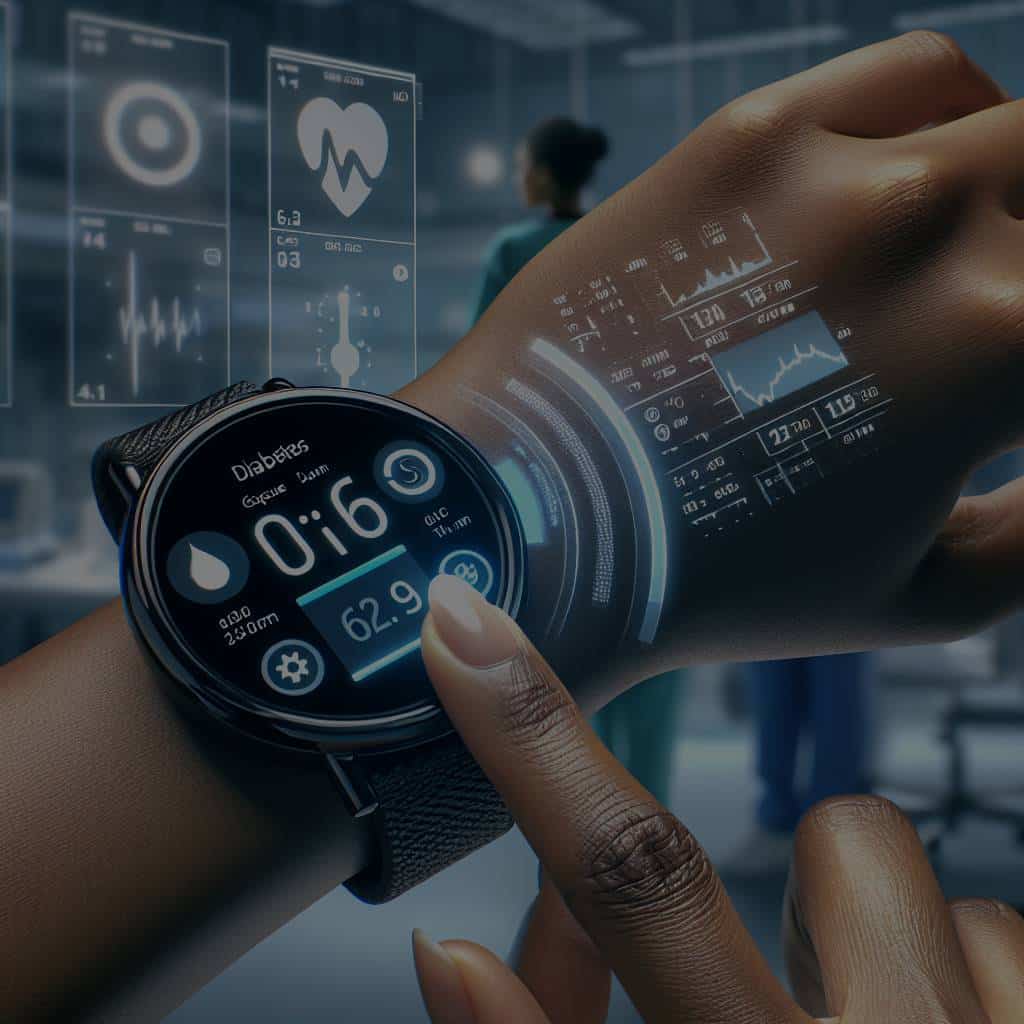Will Continuous Glucose Monitoring Smartwatches Revolutionize Diabetes Management?

In a world where technology evolves at an astounding pace, the health sector is no exception. Ground-breaking technological advancements have made it possible for diabetics to live longer, healthier lives. One such advancement is the continuous glucose monitoring (CGM) smartwatch. A significant leap forward, the CGM smartwatch promises to redefine diabetes management. This article delves into how this technology works, the impact it is making in the lives of people with diabetes, and the promising research behind it.
The Science Behind CGM Smartwatches
Before we delve into how Continuous Glucose Monitoring smartwatches could revolutionize diabetes management, let’s understand the technology behind it. A CGM smartwatch is a device worn on the wrist, much like a regular watch, but it serves a life-saving purpose, monitoring blood glucose levels in real-time.
A découvrir également : What Innovations Are Key to Developing Long-Lasting Hydrogen Storage Solutions?
A CGM smartwatch utilizes a small sensor placed under the skin that measures glucose levels in the interstitial fluid, the fluid between your cells. It then sends this data to a smartwatch, providing real-time glucose readings. This technology provides a comprehensive view of blood glucose patterns and trends, which can be instrumental in managing diabetes.
These devices have been validated by several studies published on PubMed and Crossref. A study published on PubMed and DOI showed that patients using CGM systems had better control over their glucose levels compared to those who used traditional glucose monitoring methods.
A lire aussi : Can Smart Dust Sensors Transform Environmental Monitoring Strategies?
Impact on Daily Life and Diabetes Management
One of the most significant benefits of the CGM smartwatch is its potential to radically improve daily life for people with diabetes. Traditional methods of monitoring glucose levels involve frequent, painful finger pricks. With a CGM smartwatch, this constant annoyance becomes a thing of the past.
But the benefits go far beyond the elimination of finger pricks. The real-time data provided by the CGM smartwatch allows for better diabetes management. The watch alerts the wearer when their glucose levels are too high or too low. This real-time feedback enables them to take immediate corrective action, such as consuming a sugar-rich food item if their glucose levels are too low or taking insulin if their levels are too high.
Furthermore, the data collected can be shared with health care providers, aiding them in determining optimal insulin doses and identifying patterns that could indicate a need for changes in treatment plans.
Current Market Options and User Reviews
As of now, several companies have launched their CGM smartwatches. Dexcom, a renowned name in diabetes care technology, is one of them. Their latest product, the Dexcom G6, comes with a smartwatch compatibility feature that allows glucose readings to be sent directly to the user’s wrist.
The response from users has been overwhelmingly positive. Many users have attested to the convenience of having their glucose readings on their wrist, eliminating the need for disruptive glucose checks throughout the day. Several user reviews have also highlighted the peace of mind brought by the watch’s high and low glucose alerts, allowing them to take immediate action to correct their levels.
Research and Scholarly Endorsements
The potential of CGM smartwatches has been recognized and endorsed by the scholarly community. Numerous studies on PubMed and Crossref highlight the accuracy and reliability of CGM systems in glucose monitoring. Furthermore, scholars have emphasized that the benefits of CGM extend beyond physical health.
In a study published on PubMed and DOI, it was found that CGM technology significantly reduced stress and anxiety levels among diabetics. This reduction was attributed to the increased sense of control provided by real-time glucose monitoring.
Moreover, researchers are optimistic about the future advancements in CGM technology. An article published on Crossref and DOI discussed the possibility of integrating insulin delivery systems into these smartwatches, which would allow for automated insulin dosing based on real-time glucose readings.
Legislative and Insurance Hurdles
Despite the promising benefits, the widespread adoption of CGM smartwatches is currently hampered by legislative and insurance coverage challenges. Many health insurance companies do not cover CGM technology, making it financially out of reach for many diabetics.
Moreover, there are legislative issues regarding data privacy and safety. The Health Insurance Portability and Accountability Act (HIPAA) has stringent rules about patient data, and it’s unclear how these rules apply to the data collected and transmitted by CGM smartwatches.
Despite these hurdles, the potential benefits of CGM smartwatches are undeniable. As our technological capabilities continue to grow, the hope is that these challenges will be overcome, and CGM smartwatches will become an integral part of diabetes management.
Future Developments and Technological Potential
Advancements in technology continue to push the boundaries of what is possible in health care, and the CGM smartwatch is no exception. As per Google Scholar and PubMed Crossref research, scientists are exploring the development of CGM smartwatches that not only monitor blood glucose levels in real time but also deliver insulin doses as required.
Imagine the transformation in diabetes management if a person’s blood sugar levels could be automatically controlled by a device worn on their wrist. This advancement could make diabetes management significantly easier, allowing those with diabetes to lead a life with less worry and anxiety.
Additionally, researchers are investigating the possibility of integrating artificial intelligence (AI) into these devices. The AI would analyze the collected data, learn from the wearer’s glucose patterns, and potentially predict future blood glucose levels. This predictive element could provide even more control over glucose levels, allowing for preventive measures to be taken before blood sugar levels become too high or too low.
However, these developments require time, rigorous testing, and significant financial investment before they become a reality. Yet, with the current speed of technological advancement, these future developments are not as far away as one might think.
Conclusion: The Impending Revolution in Diabetes Care
The CGM smartwatch is undeniably a game-changer in the world of diabetes management. By providing real-time blood glucose readings, eliminating the need for painful finger-pricks, and potentially automating insulin dosing, this technology can significantly improve the quality of life for people living with diabetes.
While current legislative and insurance issues may limit the adoption of this technology, the overwhelmingly positive user reviews and scholarly endorsements indicate that the benefits of CGM smartwatches significantly outweigh these challenges.
As we continue to witness the rapid evolution of technology, the full potential of CGM smartwatches is only beginning to be uncovered. With ongoing research and development, we may soon see a world where diabetes is managed with the simple press of a button on a wristwatch.
From continuous glucose monitoring to automated insulin dosing, the future of diabetes care is looking increasingly promising. And with each technological advancement, we come one step closer to this future. As this revolution continues to unfold, one thing is clear: CGM smartwatches are set to play a significant role in the evolution of diabetes care.
